Federal Reserve Raises Interest Rates For First Time In Nearly A Decade
In a move it had been telegraphing for the better part of a year, the Federal Reserve raised interest rates for the first time since July 2006.
To the surprise of basically nobody at this point, the Federal Reserve Board announced today that it was raising a key interest rate, the first time the Board has raised rates in nine and a half years:
WASHINGTON — The Federal Reserve said on Wednesday that it would raise short-term interest rates for the first time since the financial crisis struck, a vote of confidence in the strength of the American economy at a time when much of the rest of the global economy is struggling.
The widely anticipated decision, a milestone in the Fed’s postcrisis stimulus campaign, ends a seven-year period in which the Fed held short-term rates near zero. Even as it raises its benchmark interest rate by 0.25 percentage points, to a range of 0.25 to 0.5 percent, however, the Fed emphasized subsequent increases would come slowly.
The decision to raise rates “recognizes the considerable progress that has been made toward restoring jobs, raising incomes and easing the economic hardships that have been endured by millions of ordinary Americans,” the Fed’s chairwoman, Janet L. Yellen, said at a news conference after the decision was announced.
Interest rates on mortgages and other kinds of loans, and on savings accounts and other kinds of investments, are likely to remain low by historical standards for years to come.
Moving to raise rates is the most important and riskiest decision the Fed has made under the leadership of Ms. Yellen, the Fed’s chairwoman since early 2014.
Every other developed nation that has raised rates since the end of the financial crisis has been forced to backtrack as economic conditions proved unable to handle higher rates. There are also signs of strain in some financial markets as investors dump high-yield junk bonds and pull money from developing markets.
The decision to raise rates was supported by all 10 voting members of the Federal Open Market Committee. They agreed on the move despite concern expressed in recent months by three of those officials that the economy might not be ready for higher rates, a view shared by some outside economists and by Democrats who argue the Fed is prematurely curtailing job and wage growth.
The Fed’s announcement cited the strength of job growth, and the broader backdrop of a moderate-but-steady economic expansion, as evidence that the economy no longer needed quite as much help from ultralow borrowing costs.
Fed officials predicted in a set of forecasts also published Wednesday that they would raise interest rates by about one percentage point a year over the next three years, reaching 3.3 percent by 2019.
The Fed said that beginning on Thursday, it would seek to keep short-term interest rates in its new range. To set the new baseline, the Fed said it would pay banks an interest rate of 0.5 percent on unused money, and it would borrow up to $2 trillion from other financial firms at a rate of 0.25 percent. Those measures were stronger than markets had expected, reflecting the Fed’s determination.
Even as the Fed said it would raise rates, it released a set of updated economic projections from its senior officials underscoring that they expect the economy to grow slowly in coming years. The officials predicted, on average, that the economy would expand by 2.4 percent next year and that the unemployment rate would reach a new low of 4.7 percent.
But they expected somewhat slower growth in subsequent years. And even as joblessness remains low, they predicted that inflation would rise only gradually to the 2 percent annual pace the Fed regards as most healthy.
Most officials predicted the Fed would once again miss its 2 percent inflation target next year.
Ms. Yellen herself posed the question in her statement, “With inflation currently still low, why is the committee raising the federal funds rate target?”
She said that inflation was being suppressed temporarily by factors including lower oil prices and that it would rise as job growth continued. She added that the Fed needed to act now because monetary policy influences economic conditions gradually.
If the Fed waited to raise rates, Ms. Yellen said, “We would end up having to tighten policy relatively abruptly at some point.” She continued, “Such an abrupt tightening could increase the risk of pushing the economy into recession.”
Looking ahead, the rate at which the Fed tightens its monetary reins will be the central question confronting Ms. Yellen and her colleagues as the six-and-a-half-year-old economic expansion unfolds in unpredictable ways. The challenges will be heightened even more by the fact that 2016 is a presidential election year.
The unemployment rate has fallen to 5 percent, a level historically consistent with a healthy economy — and is the primary reason the Fed has decided to act. Inflation, however, remains quite weak, indicating that the economy remains weak, too.
(…)
Critics of the Fed’s decision argue that the unemployment data is misleading. The share of adults neither working nor looking for work rose sharply during the recession. Those adults are not counted in the unemployment rate, but some may resume looking for work as the economy improves.
“Our job recovery remains incomplete,” Representative John Conyers, a Michigan Democrat, wrote earlier this week. He has introduced legislation instructing the Fed to aim for an unemployment rate of 4 percent, well below the current rate. “The Fed should not slow job creation and wage growth absent clear evidence of inflation,” he said.
Some analysts said they expected problems in the auto market, where cheap loans have spurred booming sales. While housing sales remain well below prerecession levels, car sales have climbed to record heights in recent years. “It will hurt borrowers and it will hurt the real economy because that’s what’s driving the auto industry right now,” said William Spriggs, the chief economist at the A.F.L.-C.I.O.
Still, while rates on mortgages and other kinds of loans tend to rise with the Fed’s benchmark rate, the relationship is not mechanical. During the housing boom, mortgage rates declined even as the Fed raised short-term rates because of increased foreign investment. That pattern could recur if investors once again conclude the United States is a better investment than other parts of the world.
The era of minimal returns on savings also won’t end soon. Berkley Bank in Englewood, Colo., currently offers an interest rate of 0.50 percent on a one-year certificate of deposit. Brandon Berkley, the bank’s president, said the Fed’s rate increases eventually would translate into higher rates for his depositors and borrowers, but he said the bank might not start raising rates immediately.
As The Washington Post notes, this is the first time the Fed has raised rates since July 2006, when George W. Bush was President, Republicans still controlled Congress as they had since the 1994 elections, and the St. Louis Cardinals were on their way to winning their first World Series since 1982.
Based on how events have unfolded over the past year, this move doesn’t really come as a surprise and, indeed, most investors and others had already priced-in the assumption that we’d get an interest rate hike before the end of the year For the better part of this year, the Federal Reserve has been making clear that they intended to raise interest rates at some point assuming that the economic data justified it. Given the fact that rates were at historically low rates in the wake of the rate cuts that the board had put in place to attempt to deal with the impact of the Great Recession, that the economy has been in recovery, albeit a not entirely strong recovery, since mid-2009, that even the low level of inflation we have now meant that some rates were effectively zero if not in a negative state, and that rates had not been raised since George W, Bush was President, it was seemingly inevitable that there would be an increase at some point. The only question has been when it would happen. Initially, it appeared that we’d see the increase after the board’s September meeting, but a number of factor combined to cause them to step back from the bring. Those factors included economic data that showed that growth was slow, followed by a market panic in China that spread around the world rather quickly, Citing these and other factors, the September meeting ended with the board deciding to delay a rate increase, a step it took again again in October. In the weeks since then, though, various comments from the board, along with stronger economic data such as the October jobs report, signs that third quarter economic growth was stronger than expected based on the most recent revision, and a fairly decent November Jobs Report, made it clear that we’d see a modest rate increase after the conclusion of this week’s meeting.
All that being said, as the article linked above notes, the Federal Reserve is stepping back into uncharted territory with this rate increase and it’s unclear what this will mean going forward. Even though this is a modest rate increase, it’s comparative impact on the economy going forward could be significant when the rate increase makes its way to increases in rates for mortgages, business loans, car loans, and consumer debt. If the Fed has miscalculated and the economy isn’t as strong as they believe then it could be a problem for the economy going forward, something that may not be apparent until well into the New Year. At that point, the condition of the economy is likely to start becoming the important factor in the races for President, Congress, and the Senate that it has always been, and a slowing or weak economy could end up being problem for Democratic candidates in close races. On the other hand, if the increase helps keep the economy moving forward without overheating then it could undermine the Republican argument that the economy is weaker than it appears based on economic data alone. At some point, the Fed may then be forced to act again, but the fact that Federal Reserve Board Chairwoman Janet Yellin has made clear that any future increases would come at a gradual basis would suggest that it won’t happen any time soon. The more important question for Yellin, though, may be whether the board will have to consider backtracking on its increase as other central banks around the world have been forced to over the course of the past several years. We won’t know the answer to that question, though, until we know what impact the increase will have on the economy, and that’s something we can’t know intuitively.
Whatever happens, the Fed has taken a step it hasn’t taken in nearly a decade, and that alone is significant news.
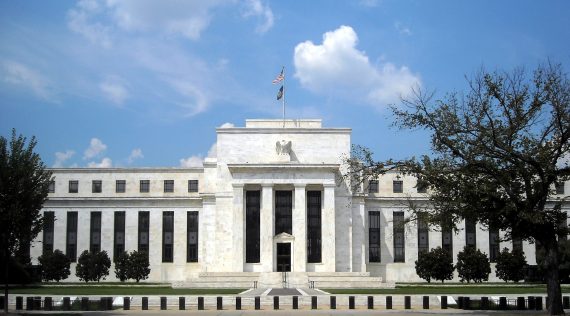

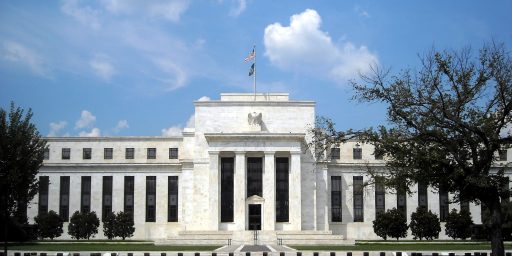

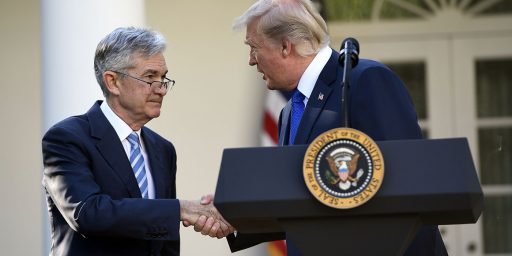
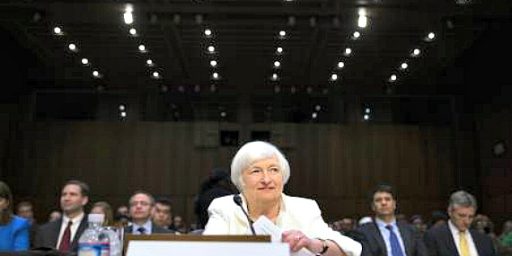
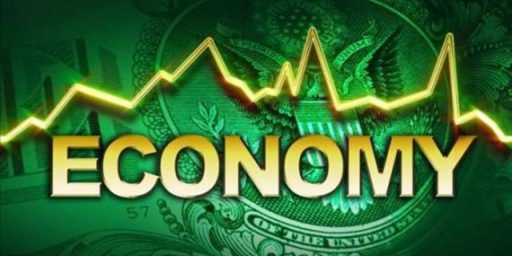
However, the Republicans have been arguing that interest rates should be raised; that the economy is artificially inflated; and that the interest rates should be at some mythical “natural rate”. I don’t see how they reconcile these two thoughts.
I have yet to see any argument for even this modest hike except A) it’s “normal”, and B) some class of people, usually stated as retirees, will benefit from the free money.
A) isn’t really an argument at all. B) is the real reason, except that it’s banks that will get free money. Giving free money to banks is not a very compelling economic argument. But since the Fed is a creature of the banks, it’s an argument they are very sensitive to, especially if it’s made with sufficient discretion that no one has to acknowledge what’s really going on. Hence the argument that Goldman Sachs concern is the plight of the poor retirees.
@Scott: Oh, it’s exactly the same habit the WSJ has. On one page they’ll whine about raising rates because it makes money more expensive for businesses, while on the next page they’ll complain about the existing low rates because it’s so horrible for those poor oppressed retirees not getting sufficient income from their portfolios.
Whatever happens, it’s President Obama’s fault, of course.
Oppressed!?! I would gladly trade some abuse for any income at all from my shares.
A lot of people are going to see this as a problem: higher interest rates could mean higher mortgages, higher credit card payments, and higher car payments. The home builders around here were just starting to see an upward movement. People will see this as bad news and possible portents of another economic crisis.
While there have been some improvements in some areas of the economy, much remains slow. Growth is still not where it should be. Personal debt is a problem, as is the deficit – which politicians don’t want to talk about. Wages remain flat. People struggle from paycheck to paycheck. Jobs are there if someone is interested in a future as a cotton candy technician, or a school bus seat repair person.
The signs are not good. People are wary, nervous. The word “crash” is in the air, it is whispered in hushed conversations at the coffee shops and convenience stores. The monetary policy and supply is the subject of worried conversations.
There is one surety, one constant, one thing to go to in these troubled, unsure, unstable times we are in: Gold ! Go to gold before the dollar falls.
“He’s the man, the man with the Midas touch …he’s Mr
Goldfinger ! ” (Bassey, “Goldfinger”, Bond’s best movie)
Who ya gonna’ believe Swell Tyrell or these guys?
Prepare for gold prices to plunge…as low as $350
http://money.cnn.com/2015/07/30/investing/gold-prices-could-drop-to-350/
@ernieyeball: damn I hope it does. It’s too useful a metal ( all those lovely d-orbitals) to be used for jewelry.
I see no reason for this increase, but there are a bunch of inflation hawks at the Fed who always think that 1979 is just around the corner, and they have worn Yellen down. MY hope is that it doesn’t hurt the economy too much. Also too, I think that Yellen will reverse course at the moment she sees any weakening.
I’m just hoping it won’t affect the Presidential election. Any weakening will be blamed on Obama and the Democrats. I truly hope Yellen knows what the heck she is doing.
@Tyrell: So sure it has dropped 40% in the last few years. Gold is just another commodity that responds to supply and demand. It has no magical properties.
Reading a lot of “this is too soon!” arguments on this hike. People, we have been at zirp for a while now. The economy has improved steadily over the past year or more. We are talking about 25-50bp up from ZERO. Relax. Honestly we should have done this six months ago, but we have become hypersensitive economically. It will be okay. It’s 25-50bp for christs sake. Sorry, but I don’t see the panic in this.
Unfortunately we already became Japan II. With more onerous regulations, to boot.
We’ll have a shitty real economy for as far forward as the eyes can see. If you don’t want to believe that, just ask the baristas and waiters of America, i.e., recent college grads. In a real economy with real growth, educated people don’t have to live at home and dish out mochas on the weekends.
@Bill Lefrak:
Apart from the homeless, most people tend to live at home.
This is nonsense.
@Bill Lefrak: Uh, dude–have you lived in Japan?
Trust me….but no. You’re talking about a country which had one government agency to handle the liquid hydrogen for rocket launches and another government agency handling the liquid oxygen for rocket launches (for the same damn rocket launch) and you’re telling me that US regulations are CRAZIER?!
I’d like to see some proof of that, bucko…..
@Scott:
Judging from what I’ve seen on the internet, a gold fixation can make brain cells disappear.
@Jc: economy improvement: a lot of people are not seeing this improvement : flat wages, many are in low paying, dead end jobs with no benefits , deficits, health insurance gone up, and talk going around of a crash. The economic growth is far from where it should be, and personal debt is a big problem. People are living from paycheck to paycheck. None left for savings.
The worst recovery in US history.
The optimism and hope are not there.
“Take this job and shove it, I ain’t workin’ here no more !” (Johnny Paycheck)
@Scott: Where do you live that Republicans need to reconcile contradictory thoughts?
@Tyrell: you know which was the 2nd slowest expansion in past decades? 2001-2007. and that was not preceded by an economic catastrophe, global one for that matter. Most of what you reference has been ongoing even prior to 2001, so why this ongoing trend? It goes far beyond this administration, and will continue far beyond it. Chart all of your points and ask yourself when and why did we start to go wrong
@stonetools:
U-3 unemployment is at 5.0% and probably destined to fall, so it’s time to begin slowly increasing rates now so that drastic increases can be avoided later. Inflation isn’t a problem now, but it could be if rates are too low while the nation is at full employment.
Mortgage rates probably won’t change much if at all, so this increase won’t mean much to consumers. (Goldbugs, on the other hand, should prepare for a proper shellacking.)
@Scott: No big changes in commodity prices today. Gold and silver were actually up a little and oil and natural gas were down a little but within the range we have seen the last few months.
My sister retired from a major oil company a couple of years ago and has been doing consulting work since then. She tells me her business is actually up.
@Ron Beasley: Presumably the market had priced the rate hikes months ago. Now, it’s all a waiting game to see the effects of the hike on the real economy.
Any time there is just a hint of an interest rate increase, it brings painful memories of the ’70’s: high rates, high unemployment, high runaway inflation: we can’t have that again.
And the so – called gas shortage hoax that brought high gas prices and messed up the economy worse
@Tyrell:
When Volcker raised the federal funds rate in his campaign to fight inflation, the federal funds rate peaked at 19.1%.
With the latest increase, the federal funds rate is now 0.5%.
19.1% vs. 0.5%. Would a rational person see any similarity between those two numbers?
@Pch101: To be clear, the current fed funds rate isn’t 0.5%, it’s 0.37% a month ago it was 0.28%. The top of the range is 0.5%, but I agree with your general point.
For those paying attention, the fed raised rates and the yield flattened over 10 bps. That’s not a good sign. What happens over the next 3-6 months remains to be seen, but fundamentals have continued to weaken (employment is a lagging indicator so I wouldn’t point to that as a sign that the economy is strengthening).
@Avid sportman:
Employment is relevant to managing the federal funds rate because of the Taylor rule — excessively low unemployment sparks inflation as labor shortages lead to higher wages, which lead to inflation.
@Pch101: Right, but that doesn’t change the fact that employment is more often than not a lagging indicator for economic strength. Things like high yield credit spreads, and yield curve flattening, are generally followed by a fall in new orders and outputs which are much better indicators of economic strength and are confirmed much later by payroll employment figures. Industrial production has been down 8 of the past 10 months and nearly every manufacturing report has been close to or in contraction recently. It could turn around, it did in 2012, but the fed starting easing in Sept 2012, this time they’re raising rates.
@Avid sportman:
The federal funds rate attempts to balance unemployment with inflation.
GDP growth rates aren’t a direct factor. The goal is to have interest rates that are not so low that they can spark inflation, and the prospect of full employment makes this an understandable cause for concern.
@Scott:
That can’t be true – Tyrell saw Pat Boone and Ron Paul both on the television talking about how everything is about to collapse and make sure you hoard gold and stuff.
Apparently the plan is that during the apocalypse people will be willing to trade useful things like fuel, shelter and food for gold.
@Tony W: About the only stuff that gold is good for that I know of is acting as a substrate for a self-limiting graphene growth process.
It’s conductive, it doesn’t tarnish (as silver does, which is an even better conductor), and it’s pretty. That’s about it. We might find some more uses for it (the d-band orbital half-filling) but as of now, meh.
@grumpy realist:
It’s also extremely malleable and ductile. Workability counts — that’s why titanium isn’t nearly as useful as it ought to be, for example.